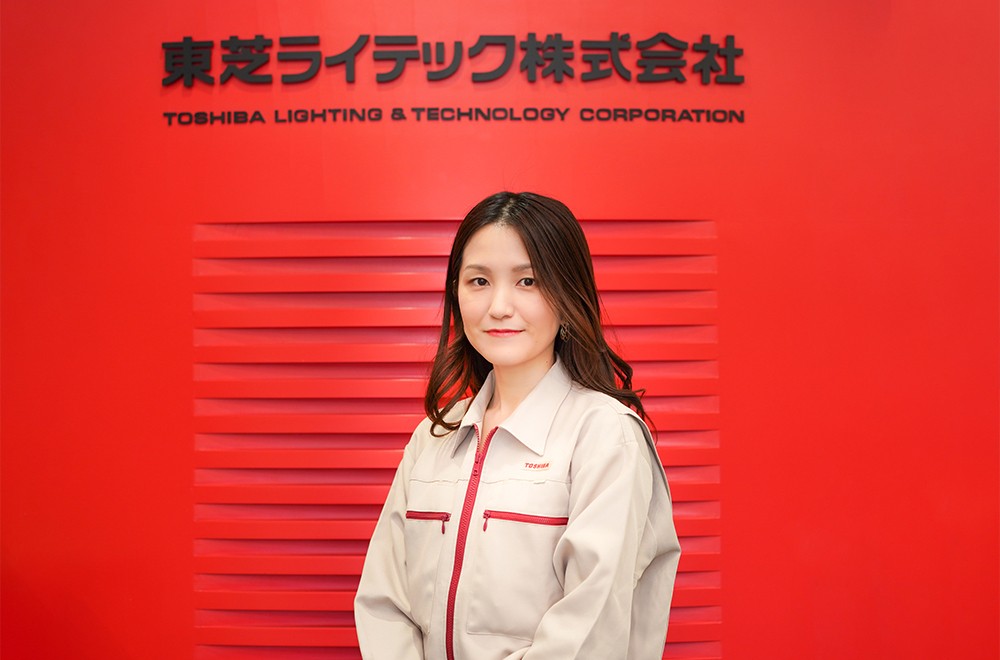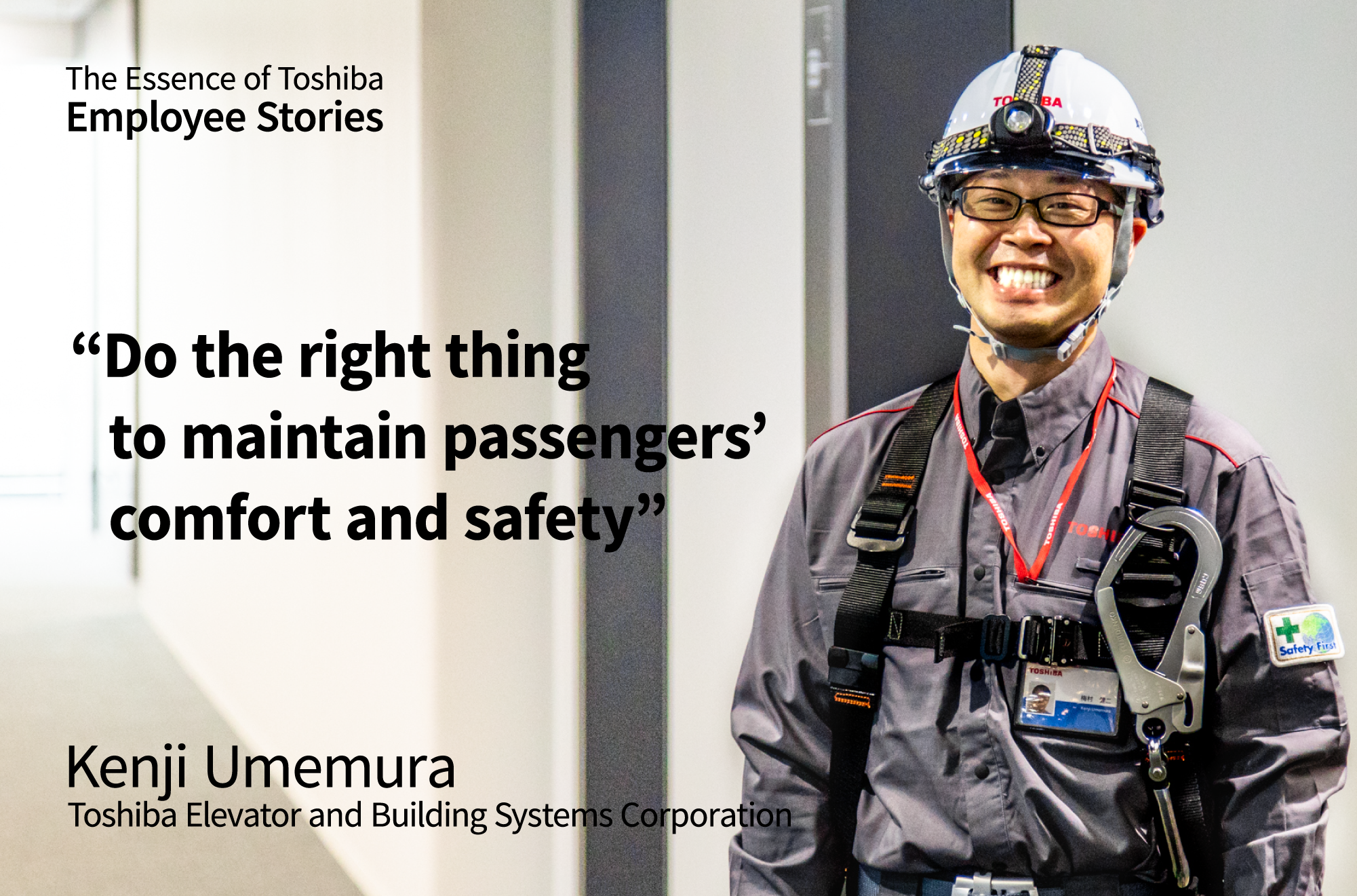Toshiba’s young engineers: Buildings constructed in the digital world are changing construction sites in the physical world
2021/07/09 Toshiba Clip Team
- BIM: Advanced architectural design method that connects engineers digitally
- Utilizing design-time data throughout the building lifecycle
- Trust in young employees, an approach that generates innovation
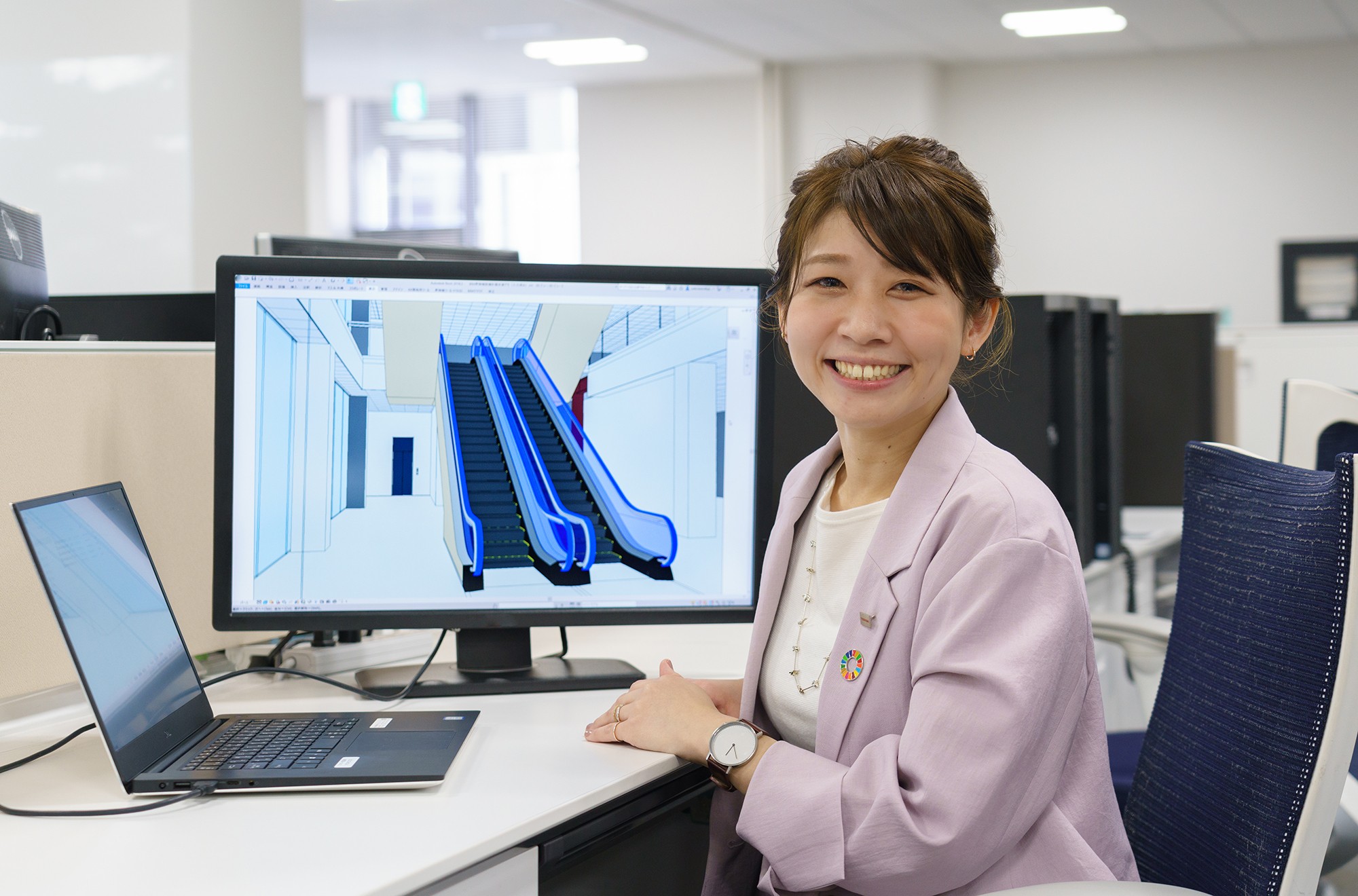
Many of the practices we have followed for many years are either the most efficient or most successful ways of doing things, and there’s a lot of truth in the old saying, “if it ain’t broke don’t fix it.” However, if we don’t just follow habit, and ask ourselves, “Is it really okay to keep this as it is?” we can open up the way to innovation.
A new architectural design method, 3D virtual modeling, is changing the construction industry
More goes into huge high-rise buildings than concrete and steel. Along with the doors and windows, there is the equipment needed to provide amenity, including elevators and escalators. All these many elements combine in a building’s composition.
Yuko Kato, an engineer at Toshiba Elevator and Building Systems Corporation, knows just how complex this composition is: “The design process progresses while confirming the hundreds of design drawings from the companies involved. These cover everything: the building framework, windows and doors, lighting and other fixtures and fittings, elevators, and so on. With all this, in the post process we often find that things did not go as expected, and workers on site have to make fixes on the fly… Some strange things can happen. We hope to resolve problems like this with BIM, building information modeling.”

Yuko Kato, Deputy Manager, Digital Transformation Group, Information Strategy System Dept.,
Toshiba Elevator and Building Systems Corporation
BIM is a dedicated design system used to generate a virtual model of a building on a computer. 2D drawings of different design elements, all managed individually in the usual design process, are combined as 3D design data on a single platform, and a model of the building is assembled in the digital world. This model allows everyone involved in a project to visualize and understand the completed image of the building, and clarifies problems related to connecting the different elements at the design stage, not on site during construction. Toshiba Elevator provides BIM parts for elevators and escalators for architectural planning and basic design, and is collaborating with the construction industry on BIM development for each stage of the process: execution design, installation, and work at construction sites.
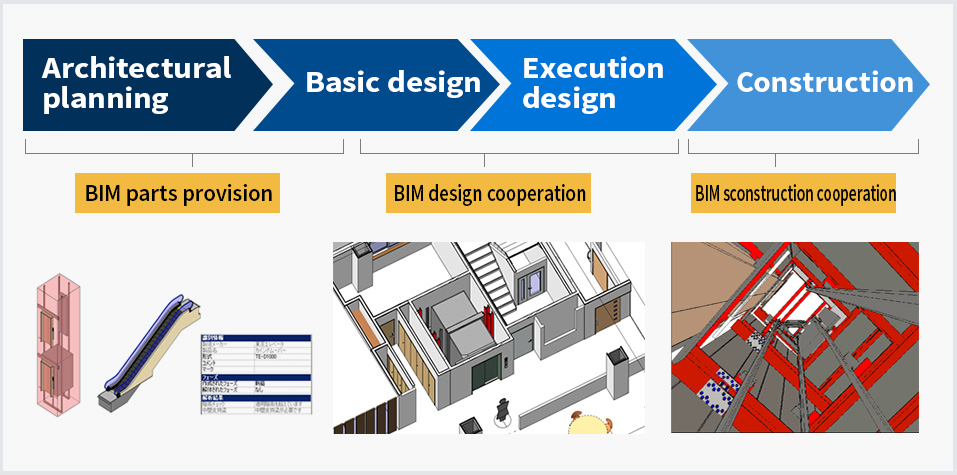
Overview of BIM support services in each phase of construction
“By using BIM for elevator and escalator installation design, we can promote more efficient communications with customers and improve in-house processes; it is helping us to reform,” says Kato. “My job is to develop 3D CAD, the computer-aided design used on BIM, and also to develop a system that utilizes design data company-wide.
“I already mentioned the many design elements go into a building. In addition to that, another part of architectural design is that as a project progresses, more and more design drawings are needed, and these all have different levels of detail, what we call LOD. During the basic design stages, we can use plans with relatively low LOD, but construction requires drawings with very high LOD. LOD is the key to utilizing the model, not only for architectural design, but throughout the entire life cycle of the building.
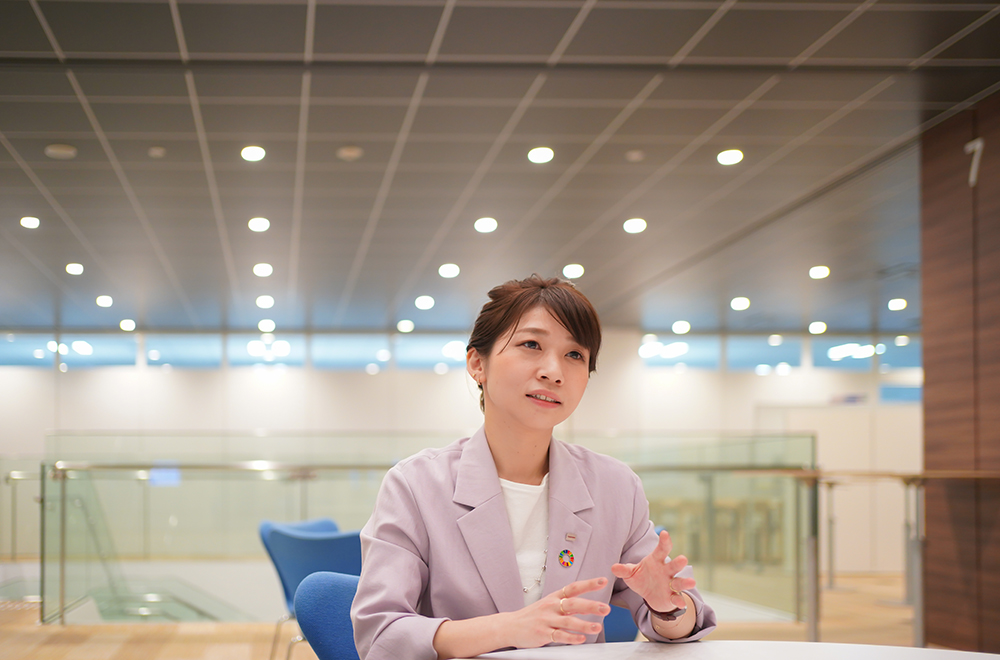
“Our aim is to develop a mechanism that allows early design drawings with low LOD to be used in subsequent processes. If you have a system that can seamlessly increase the LOD in the model as the project progresses, you can continue to use the drawings created for each process. Design drawings are painstakingly created by engineers, and I want to treasure them and use them to generate new value.”
10 years of growth with BIM
As she explains it, Kato’s respect for the design drawings and the engineers who created them is all due to the environment in which she was raised. “My father is an electrical contractor with his own company, and there were always drawing around the house. They were on paper then, and I remember amusing myself by drawing pictures on the back of discarded blueprints. At the same time, I also grew up watching engineers making the drawings.”
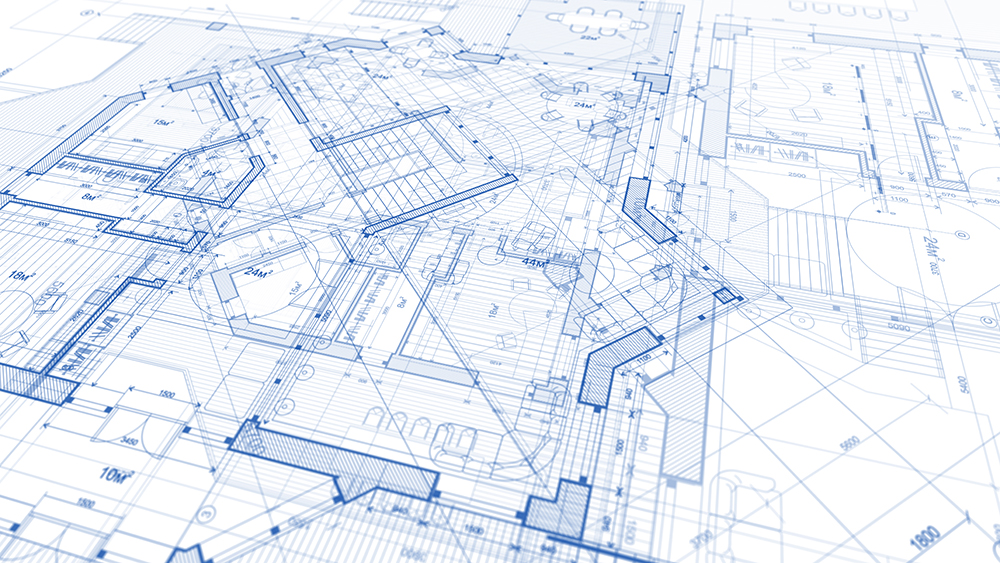
Partly due to the influence of her father, Kato became interested in mathematics and manufacturing, and majored in Materials Engineering at university. Her graduation thesis was on increasing the storage capacity of hard disks by applying radium to their surface, and she first got interested in working for Toshiba because it was also researching hard disks.
“When I was looking for a job, I was invited to factory tour at Toshiba Elevator, where I had the opportunity to talk to an alumnus of my university. He was very open, and said, “You can ask me anything.” So I told him all about my job hunting, and he suddenly told me, “You’re not showing enough confidence, you need to promote yourself more.” And then he went on to tell me that the way I had been going about job hunting isn’t the best. I was a bit taken aback at first, but gradually I was attracted to his personality, and also to Toshiba Elevator—the company where that kind of person works.
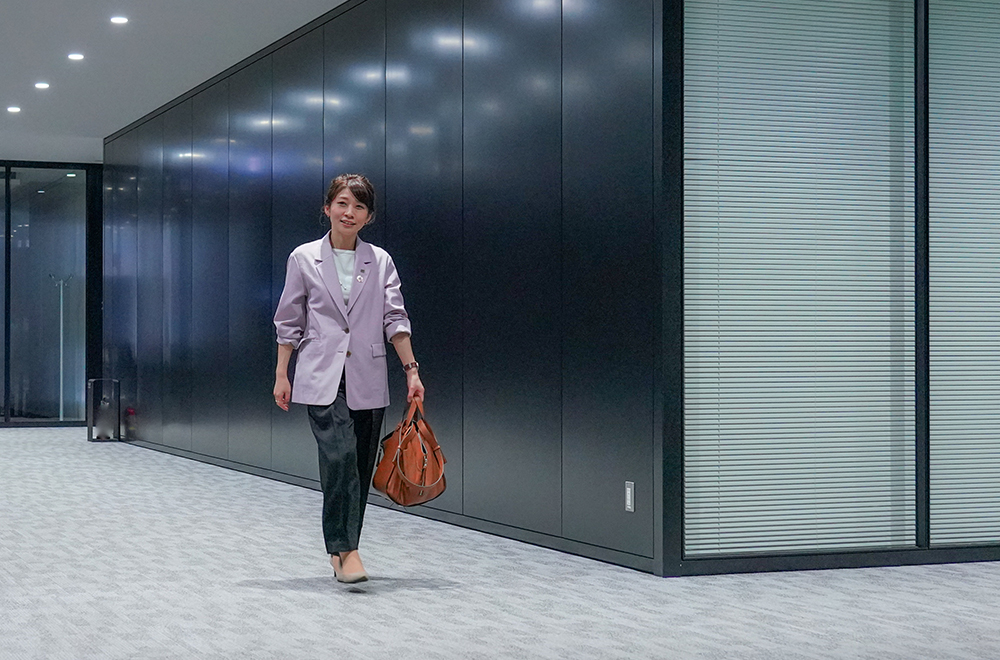
Today, Kato has a central role as a dedicated BIM engineer, and works alongside other young engineers and new employees.
“We work with a wide range of development systems and many applications, and I have visited Canada and the United States on business, because we want to incorporate the world’s most advanced technology. This has helped me to grow as an engineer, day-by-day, and while I do that I am also focused on helping to nurture younger generations. I was once a new employee, and I’m doing my best to pay on the guidance that I received from my many seniors.”
Toshiba Elevator started to research BIM in 2008, the year Kato joined the company. Then the following year, 2009, it started a BIM support service, a step ahead of the industry.
“I’ve been working on BIM since my second year in the company,” Kato recalls. “When I realize that I’ve been focusing on BIM all this time, I feel deeply moved, and also confident. We use cutting-edge technologies, and because of that there have been time when things didn’t go according to plan, but in the end we have produced results”.
As Kato recounts with pride, the latest version of the system, which she worked on for about two years, was completed and went live in-house in December 2020. It was the outcome of coordination both inside and outside Toshiba Elevator, responding flexibly to unexpected situations, and carefully explaining the intentions behind requests.
“This project brought home to me the importance of communication, and as someone who really enjoys talking to people, I think it was a job where I was able to show my strengths.”
In the final stage of the project, there were instances when data could not be linked as expected. When that happened, she had to talk to the people in charge of each phase, to find out where something needed to be fixed.
“Looking back, I think it was solid, demanding work, but it’s also true that I was enjoying myself a bit.”
Kato smiles as she looks back and talks about those days. Problems that occur as a project nears its goal can really undermine motivation. However, Kato used her innate communication skills brilliantly to find a solution and way forward. Almost without pause, she quickly goes on to explain that she is now starting a new round of development that aims to further expand application. As she sees it, BIM is a technology that has just stepped up to the starting line.
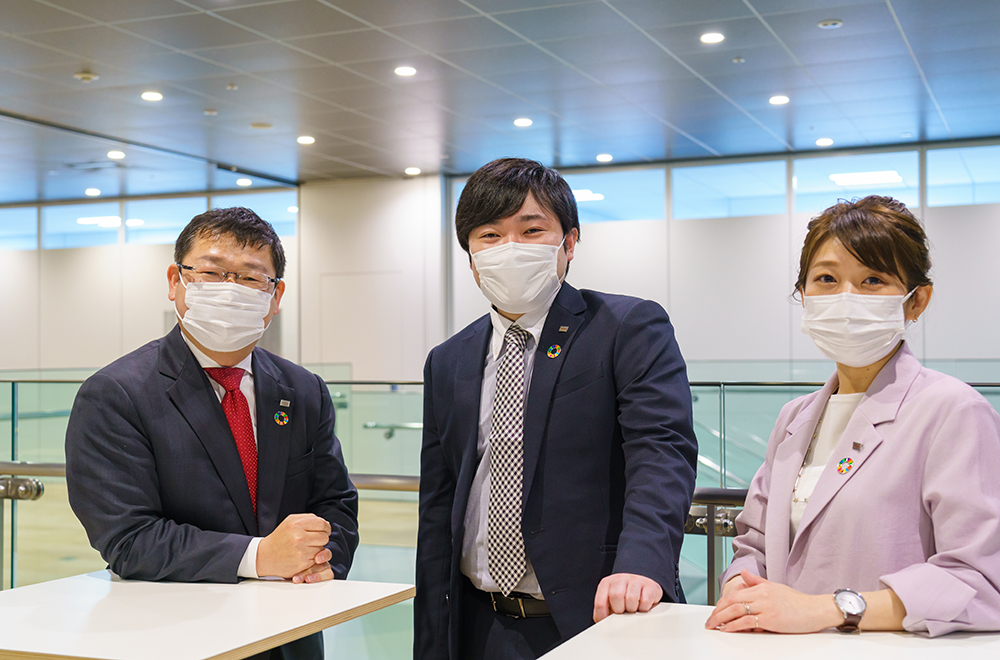
Kato and her colleagues. Although she is currently working at home,
she sees close communication when in the office as more important to her than ever.
“I think the reason why Toshiba Elevator can run with industry leaders in this new field of BIM is that despite a difficult market environment, executives trusted and invested in the employees working on BIM, in anticipation of its future business potential. I want to create value commensurate with that support, and ensure that this a technology that spreads its wings and flies high, for the growth of Toshiba Elevator.”
Kato’s conversation reveals that she is passionate about her work, and takes pride in advances in BIM that put it at the heart of innovation in the construction industry. It comes as no surprise to hear that the phrase that stands out for her in the Essence of Toshiba is “look for a better way.”
“As the technology continues to develop, I want to continue to grow as an engineer, and relish the real pleasure of contributing to society. I want to move forward while enjoying that environment.”
![]()





